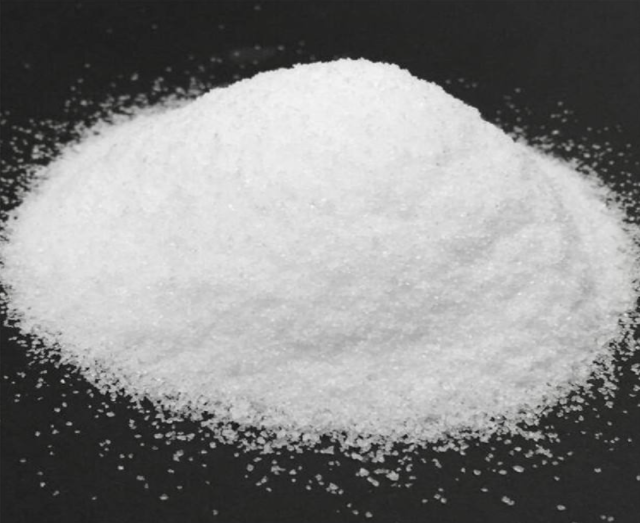Polyacrylamide is an agent used in sewage treatment. This agent is used in a wide range of industries, such as water treatment, oil production, papermaking, medical materials and other industries. The role of each industry is different.During use, the problem of insufficient viscosity of polyacrylamide will occur. Temperature has a great impact on the viscosity of polyacrylamide, followed by hydrolysis time, mineralization, etc., will affect the effect of use. The following will be introduced in detail.

1. The scope of action of polyacrylamide
1. Water treatment field
Water treatment includes raw water treatment, sewage treatment and industrial water treatment.It is used in conjunction with activated carbon in raw water treatment, etc., and can be used for the condensation and clarification of suspended particles in domestic water.Using organic flocculant acrylamide instead of inorganic flocculant, even if the sedimentation tank is not modified, the water purification capacity can be increased by more than 20%.
2. Application in oil production
Polyacrylamide is a class of multifunctional oilfield chemical treatment agents, which are widely used in the drilling, cementing, completion, workover, fracturing, acidification, water injection, water plugging and profile control, and tertiary oil recovery operations of petroleum extraction, especially in the fields of drilling, water plugging and profile control, and tertiary oil recovery.The aqueous polyacrylamide solution has a high viscosity and has good thickening, flocculation and rheological regulation effects. It is used as an oil repellent and drilling mud regulator in petroleum extraction.
3. Papermaking field
Polyacrylamide is widely used as a retention aid, filter aid, homogenizer, etc. in the field of papermaking to improve the quality of paper, the dehydration performance of the slurry, the retention rate of fine fibers and fillers, reduce the consumption of raw materials and environmental pollution, and is used as a dispersant to improve the uniformity of paper.
4. Medical materials
Polyacrylamide gel can be used as a non-prothrombin granulator, surgical, contact lens raw material, outer coating material of microcapsules, and used to manufacture high-quality hemostatic products, women's sanitary napkins and children's diapers.Polyacrylamide with particle sizes ranging from a few hundred microns to tens of microns can be used as chromatographic fillers (such as gel column fillers), which can effectively separate spherical proteins such as cytochromes.
5. Other industries
In the food industry, it is used for the clarification of sugarcane juice and the extraction of phosphorus from syrup in the production of cane sugar and beet sugar.The enzyme preparation fermentation liquid flocculates and clarifies the industry, and is also used for the recovery of feed protein, with stable quality and good performance. The recovered protein powder has no adverse effects on the survival rate of chickens, weight gain, and egg production.
2. Reasons that affect the viscosity of polyacrylamide
1. Effect of temperature on the viscosity of polyacrylamide
Temperature is a reflection of the intensity of the irregular thermal movement of molecules. The movement of molecules must overcome the interaction forces between molecules, and the interactions between molecules, such as intermolecular hydrogen bonds, internal friction, diffusion, molecular chain orientation, entanglement, etc., directly affect the viscosity, so the viscosity of the polymer solution will change with temperature.The effect of temperature change on the viscosity of the polymer solution is significant.The viscosity of polyacrylamide solution decreases with the increase of temperature. The reason is that the dispersed phase particles of the polymer solution entangle each other to form a polymer with a mesh structure. The higher the temperature, the easier the mesh structure is to destroy, so its viscosity decreases.
2. Effect of hydrolysis time on the viscosity of polyacrylamide
The viscosity of the polyacrylamide solution changes with the extension of the hydrolysis time. The hydrolysis time is short and the viscosity is small. This may be due to the fact that the polymer is too late to form a mesh structure; the hydrolysis time is too long and the viscosity decreases. This is caused by the loosening of the structure of polyacrylamide in the solution.After partially hydrolyzed polyacrylamide is dissolved in water, it dissociates into negatively charged macromolecules. The electrostatic repulsion between molecules and the anionic repulsion between different links on the same molecule cause the molecules to stretch in the solution and entangle the molecules with each other. This is the reason why partially hydrolyzed polyacrylamide can significantly increase the viscosity of its solution.
3. Effect of mineralization on the viscosity of polyacrylamide
The number of anionic groups in the polyacrylamide molecular chain relative to the anionic groups is large, the net charge is large, and the polarity is large, while h20 is a polar molecule. According to the principle of similar compatibility, the polymer has better water solubility and greater characteristic viscosity; with the increase of mineral content, the positive electrostatic charge is partially surrounded by the anion to form an ionic atmosphere, which binds to the surrounding positive electrostatic charge. The polarity of the polymer solution decreases and the viscosity decreases; The mineral concentration continues to increase, and the positive and negative ion groups form intramolecular or intermolecular hydrogen bonds for associative use (resulting in a decrease in the solubility of the polymer in water), and the salt ions added at the same time pass through the shielding positive, The negative charge breaks up the association between positive and negative ions and destroys the formed salt bond (resulting in an increase in the solubility of the polymer in water). These two effects compete with each other, making the polymer solution at a higher salt concentration (>0.06 mol/l) The viscosity remains small.






